Everyone seems to have a "Weirdest foods" list out there-but here at Echinoblog we offer you only the STRANGEST sampling of bizarre marine invertebrates cuisine! forget insects, snails or shrimp!
Some of the edible (?) metazoans below are usually only noticed by marine biologists, zoologists and the well-studied biologist!
What better application of knowing the strangest of marine invertebrate phyla can there be than to recognize it on your plate? Its scientific name disguised by colorful cultural argot or perhaps in a different language?
1. SEA SQUIRTS! (Halocynthia sp. possibly H. roretzi). The Korean name for sea squirts as food is: meongge (although there are several more)
Sea squirts are a kind of tunicate, which are in turn members of the phylum Chordata (the group humans and other vertebrates belong to) and when alive they look like this:
Images of sea squirts eaten in Korea. Image by scbrianchan
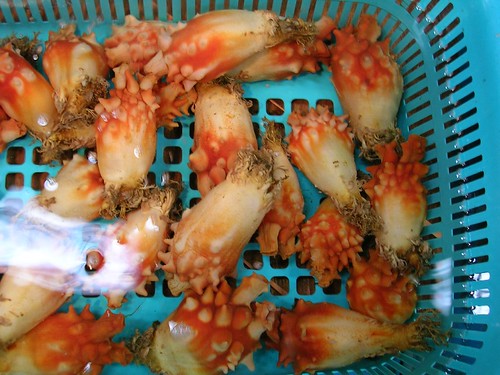 |
| image by scbrianchan |
when cooked and prepared it looks like this
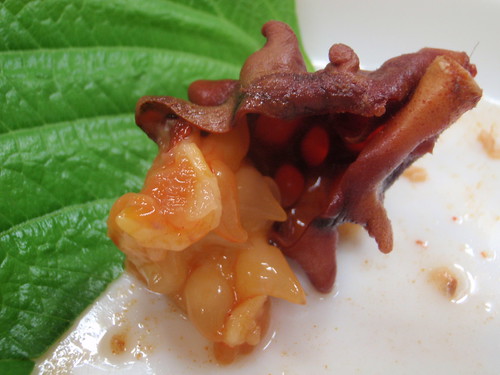 |
| image by seoxcookie |
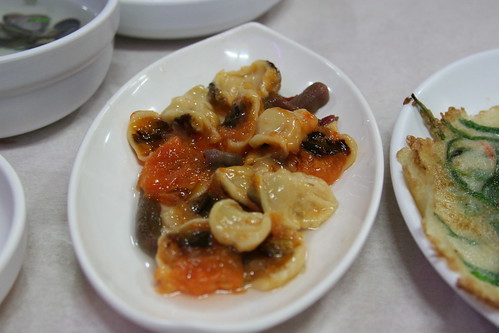 |
| Image by toughkidcst |
 |
| Image by Food Fetishist |
2. ECHIURAN WORMS! aka "fat inkeeper worm" aka "penis fish" aka gaebul (genus Urechis)
Most people have never heard of this phylum of worms. Commonly known as "spoon worms"
One of the best studied examples is Urechis caupo, occurring on the North pacific coast -living in muddy burrows which serve as homes for many other commensals, including tiny shrimps and fishes.
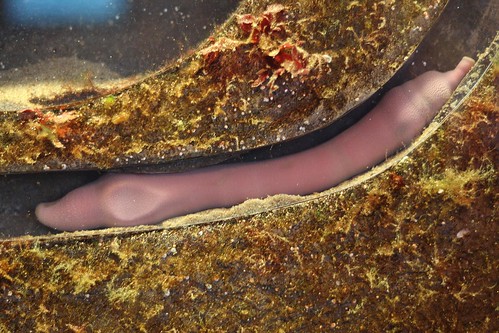 |
| Image by Peter_r |
But in Korea, a related species, Urechis unicintus is collected and eaten!
Apparently it is cut up into segments and served while twitching....
In other cuisines, it is cooked and stir fired..the picture above? gaebul and mongae aka Echiuran and Sea squirt!!
3. INARTICULATE BRACHIOPOD (Lingula sp.)
Brachiopods are one of the oldest animals observed in the geological record, going as far back as 500 million years. In some cases-they appear relatively unchanged appearing very much as they do as fossils.
and now we eat them.
This gives you an idea of what they look like alive..living in a muddy habitat
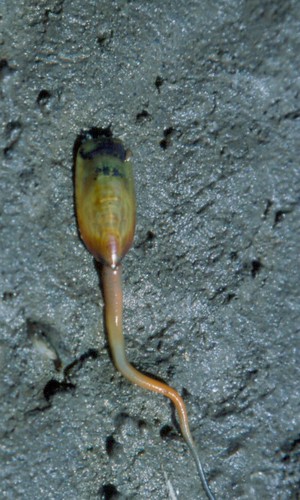 |
| Image by Changhua Coast Conservation Action |
There are two shells that fit over the animal on the top and bottom. Bivalves and other clams are fundamentally different in that their shells are oriented on the body left-right.
In one group, known as the "inarticulate" brachiopods, there is a big fleshy structure called the "peduncle" which emerges from the shell
Biologist Richard Fortey noted that they tasted like "straw' (quote is here).
Here is an image of brachiopods as sold in a food market in Makassar.
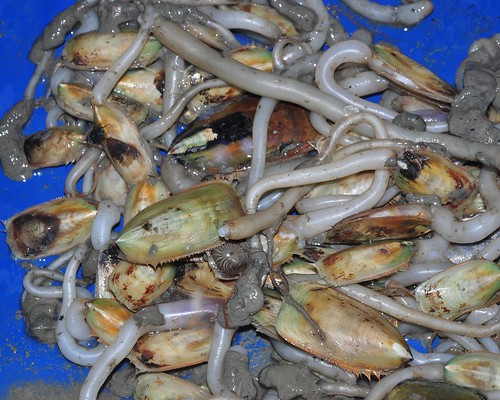 |
| Image by Arthur Anker |
 |
| Image by Peter Roopnarine |
Huh. Brachiopod curry. NOT something I was expecting to write today!
4. STALKED BARNACLES! Barnacles. Those well-known shelled crustaceans that live on docks and use their "legs" to filter feed out of the water like this:
Yes. People eat them! I've seen them in Paris and Belgium.
In some places, barnacles are quite expensive...
Other "unstalked" barnacles are also eaten!
In the Azores and Portugal, these are called cracas! Basically, these are boiled "acorn" barnacles.
5. SEA STARS! (family Asteriidae- species: Asterias amurensis)So, first let me distinguish between the "starfish for show" pictures that one sees around like this versus apparently real accounts of people who eat the gonads of starfish as seen in the video below..
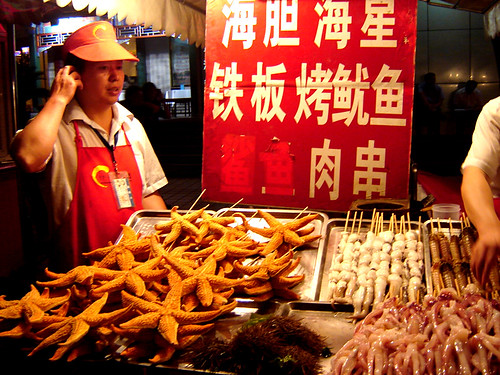 |
| Image by Robin G. Ewsing |
so maybe there is a silver lining to this?



![Percebes [Goose Neck Barnacles]](http://farm4.staticflickr.com/3121/2647554746_329b8f6842.jpg)
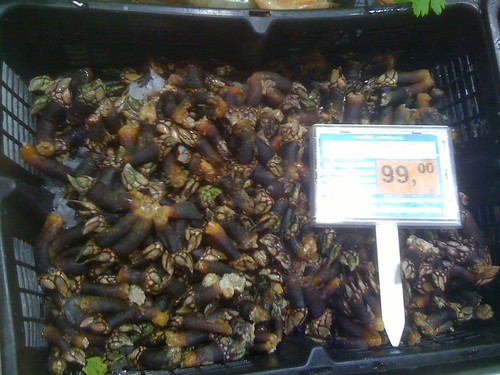
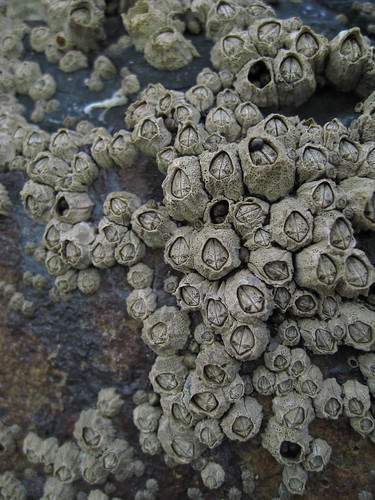
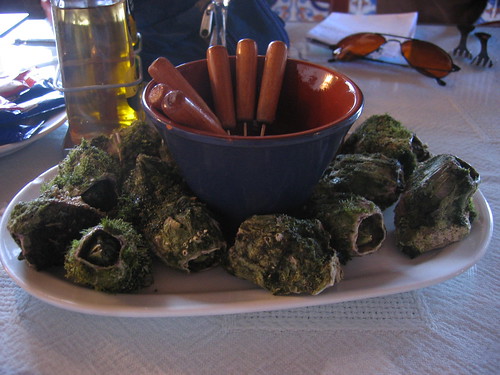
It always makes me sad to see my beloved marine inverts dumped together in a bowl or pot to be eaten. Funny, though, I don't have that problem with cows or chickens.
ReplyDeletewhat I'd like to know is whether or not the parasitic barnacles that turn crabs into zombies are favored anywhere.
ReplyDeleteConsidering that a barnacle parasite causes a relatively large extra fleshy appendage to appear on the crab, that probably tastes the same as the crab itself, I'd think parasite infected crabs would be sought after as extra meaty LOL
John,
ReplyDeleteThere are no records of those animals being eaten, although I suppose its happened inadvertently. My understanding is you need to be trained to recognize a parasitized crab..so its probably not something that one immediately picks out of a pot of crabs...
ChrisM I should have been more specific. What I mean is the specific part of the parasite's life cycle when the externa develops on the crab. No doubt you are right that no one makes a point of eating crabs found like this due to them being extra meaty. I was just wondering why no one has thought to purposely infect crabs this way in order to harvest them when those externa develops in order to sell them as extra-meaty crabs LOL
ReplyDeleteWell, I've eaten fat inkeeper worms in So Korea and probably tunicate and also found them to be rubbery and kinda not tasty. I've also eaten gooseneck barnacles while kayaking around Catalina Island. They were pretty good!
ReplyDeleteIn Southern Spain (especially, Cadiz) , Anemonia sulcata are consumed as well. They are called "ortiguillas".
ReplyDeleteBarnacles are indeed a delicacy here. And they are expensive because they are very dangerous to collect. You can watch barnacles collectors at work in chapter one of BBC's "Human Planet". The sequence was shot in Galicia, Northwestern Spain.
WHAT DO YOU MEAN BY "In Malaysia this dish is called Probolinggo TEBALAN"? Probolingo in INDONESIA, East Java province not in Malaysia
ReplyDelete